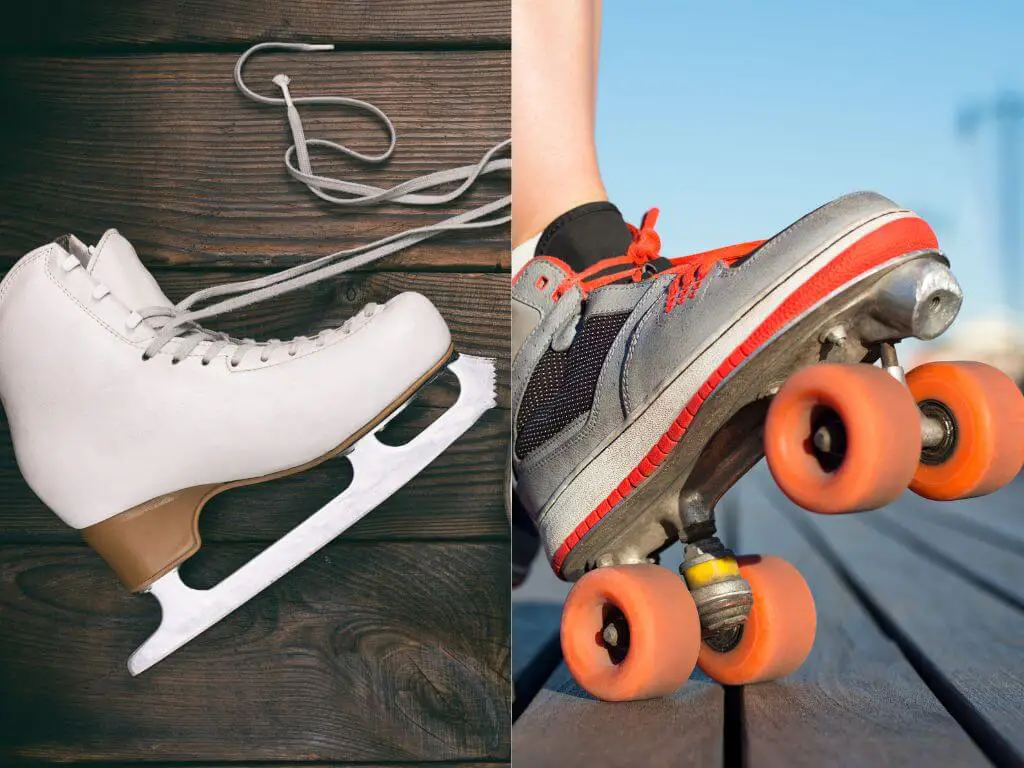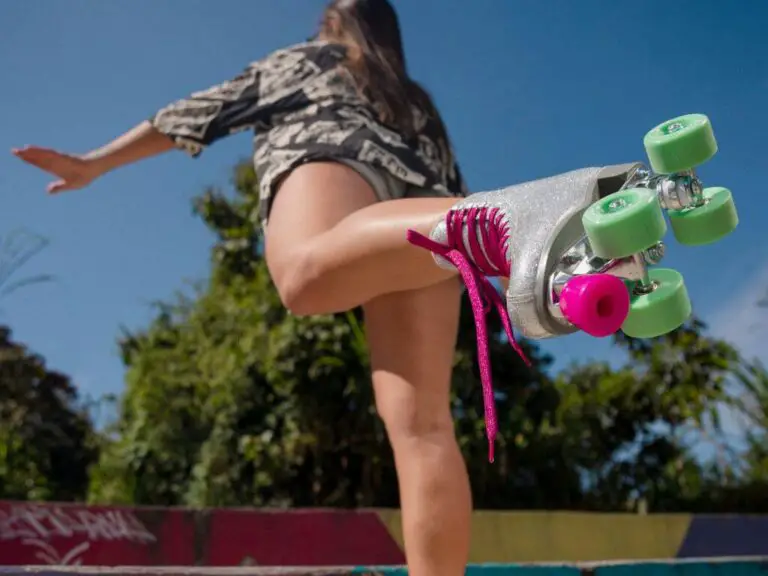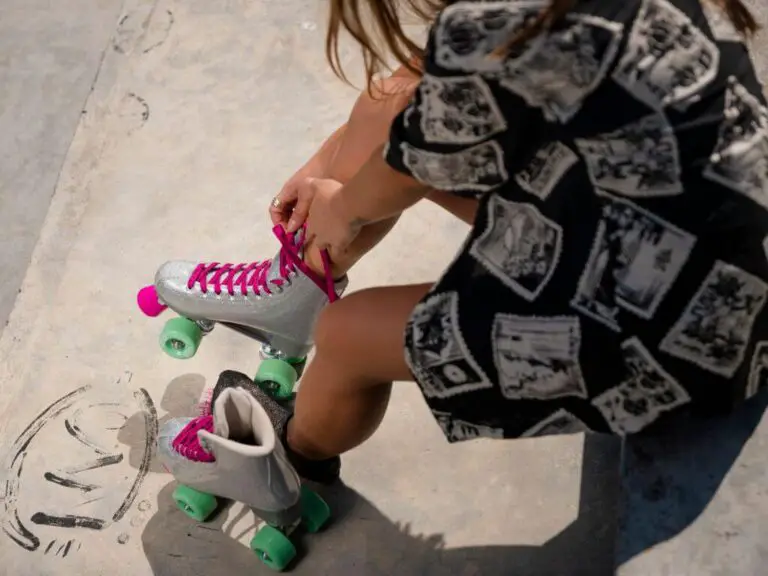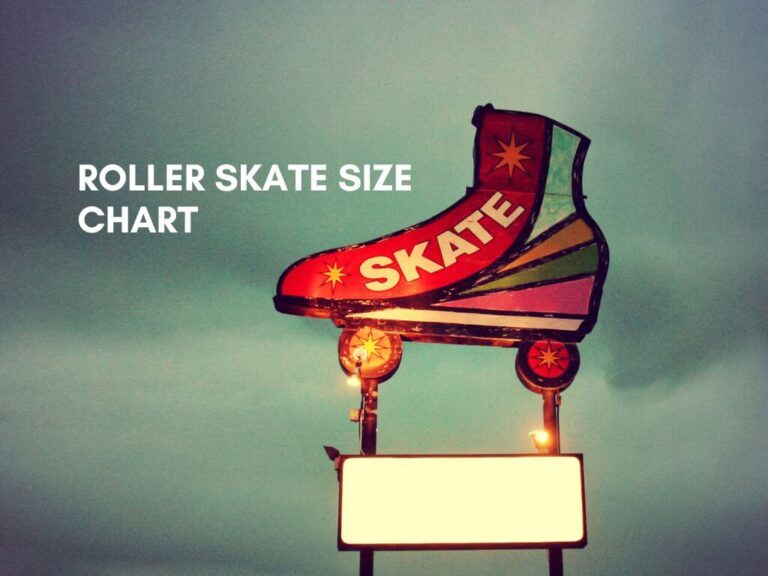Skating has become a popular way for people of all ages to enjoy fitness, fun, and a sense of community, with both roller skating and ice skating offering unique benefits. Whether you’re gliding over smooth concrete or slicing through the ice, skating provides an enjoyable and effective workout, not to mention a great way to socialize and de-stress. But when it comes to choosing between roller skates vs. ice skates, it can be tough to decide which style is right for you.
This guide will walk you through the key differences between roller skates and ice skates, covering everything from design, movement, and accessibility to fitness benefits and costs. By the end, you’ll have a clearer idea of which type of skating might best fit your lifestyle—or if you might enjoy both!

History and Popularity of Roller Skates vs. Ice Skates
Both roller skating and ice skating boast rich histories that have evolved significantly over the years.
Quick History of Roller Skating
Roller skating dates back to the 18th century when the first roller skates were invented in the Netherlands. These early designs were made of wooden planks with metal wheels. By the 20th century, roller skating had transformed into a popular pastime, with the establishment of roller rinks across the United States. Today, roller skating has diversified into various styles, including artistic roller skating, roller derby, and speed skating, appealing to a wide range of enthusiasts.
Quick History of Ice Skating
Ice skating has an even older origin, dating back over 5,000 years, with evidence of skates made from animal bones found in Finland. Ice skating became a popular recreational activity in the 19th century, particularly in Europe and North America. With the advent of modern ice rinks, figure skating and ice hockey gained immense popularity, creating a strong cultural impact that continues today.
Current Popularity and Cultural Impact
Both sports have seen resurgences in popularity due to their inclusion in films, competitions, and social events. Roller skating has embraced retro trends, drawing in a new generation, while ice skating remains a winter favorite, with events like the Winter Olympics showcasing its athleticism and artistry.
Key Design and Structural Differences
The differences in design and structure between roller skates and ice skates significantly affect performance, movement, and the overall skating experience.
| Feature | Roller Skates | Ice Skates |
|---|---|---|
| Wheels/Blades | Four wheels (quad) or inline wheels | Metal blades (typically 4-8 inches long) |
| Boot Design | Soft or hard boots for ankle support | Rigid boots that support the ankle |
| Surface Compatibility | Suitable for smooth surfaces (concrete, wood) | Requires ice rinks or frozen lakes |
Roller Skates
- Wheels: Roller skates typically have four wheels (quad skates) arranged in two pairs, or they may have inline wheels, which are set in a single line. This wheel configuration allows for stability and easy maneuverability, making it ideal for beginners.
- Boot Design: The boots on roller skates vary from soft to hard-shell styles, providing different levels of ankle support and comfort.
- Surface Compatibility: Roller skates perform best on smooth, flat surfaces like indoor rinks, asphalt, or wooden floors.
Ice Skates
- Blades: Ice skates feature a long metal blade, allowing for smooth gliding and intricate movements on the ice. The blade’s design is crucial for stability and control during skating.
- Boot Design: Ice skate boots are typically rigid, providing excellent ankle support necessary for the demands of ice skating disciplines like figure skating or hockey.
- Surface Compatibility: Ice skates require ice surfaces, whether in natural settings or indoor rinks. This limitation can affect accessibility, especially in warmer climates.
Surface and Accessibility Requirements
Accessibility plays a vital role in deciding between roller skates and ice skates.
Roller Skates
- Suitable Surfaces: Roller skates are versatile, functioning well on various surfaces, including concrete, asphalt, and smooth wooden floors. This flexibility makes them perfect for outdoor activities, skate parks, and roller rinks.
- Weather Considerations: Roller skating can be enjoyed year-round in locations with suitable weather. While rain may pose a challenge, many roller rinks provide an indoor alternative.
Ice Skates
- Ice Dependency: Ice skates are primarily restricted to ice surfaces, which can be seasonal or location-dependent. This limitation means that in warmer climates, opportunities for ice skating may be scarce.
- Rink Availability: Access to ice rinks is crucial for ice skating. While many cities have indoor rinks that are available year-round, some areas may not have easy access to quality ice facilities.
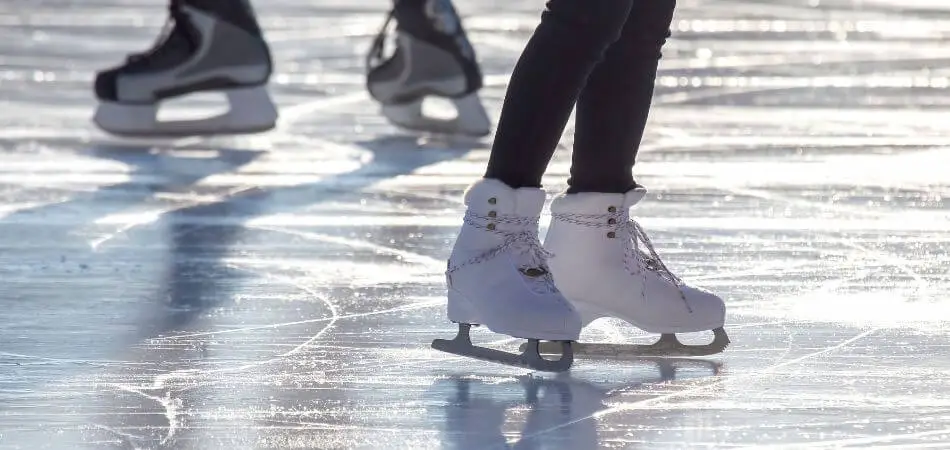
Movement and Techniques: How They Differ
The techniques and movements required for roller skating and ice skating differ significantly due to their distinct designs and surface types.
- Roller Skating Movements: Skaters push off with their legs to gain momentum, using their knees to bend and maintain balance. Techniques like turning and stopping involve shifting weight and using toe stops or heel brakes.
- Ice Skating Movements: Ice skaters rely on edge control to navigate the ice. Movements involve gliding on one foot and using the inside and outside edges of the blade to turn and stop. This requires more precision and balance due to the single-blade design.
Learning Curve and Skill Requirements
When it comes to learning how to skate, both roller skating and ice skating have their challenges.
Roller Skating
- Initial Learning: Many beginners find roller skating easier to pick up, as the four-wheel design provides more stability. The basics of balance and coordination can be learned quickly, making it accessible for younger skaters.
- Common Challenges: New skaters may struggle with stopping and turning initially, but with practice, these skills can be mastered.
Ice Skating
- Steeper Learning Curve: Ice skating typically presents a steeper learning curve due to the balance required on a single blade. Beginners often face challenges with stability and movement control.
- Skill Development: Skills like stopping using the snowplow method or the T-stop and learning how to turn effectively on the ice take time to develop.
Types of Activities for Each Sport
Both roller skating and ice skating offer a variety of activities, catering to different interests and skill levels.
| Activity Type | Roller Skating | Ice Skating |
|---|---|---|
| Recreational | Roller rinks, street skating | Recreational skating at ice rinks |
| Competitive | Roller derby, speed skating | Figure skating, ice hockey, speed skating |
| Artistic | Artistic roller skating | Figure skating |
- Roller Skating: Popular activities include roller derby, which combines speed and teamwork, as well as artistic roller skating, where skaters perform choreographed routines.
- Ice Skating: Ice skating includes various disciplines such as figure skating, ice hockey, and speed skating, each with unique skills and competitions.
Health and Fitness Benefits
Both roller skating and ice skating provide excellent health benefits, contributing to physical fitness and overall well-being.
Roller Skating
- Cardiovascular Fitness: Engaging in roller skating can significantly improve cardiovascular health, helping to enhance endurance and stamina.
- Muscle Engagement: Roller skating works the legs, core, and even the arms, promoting overall muscle toning and strength.
- Coordination and Balance: As a dynamic activity, roller skating helps improve balance and coordination through its fluid movements.
Ice Skating
- Muscle Toning: Ice skating also contributes to muscle toning, particularly in the legs and core, while enhancing joint flexibility.
- Balance and Core Strength: The need to maintain stability on one blade strengthens core muscles and improves overall balance.
- Mental Health Benefits: Both activities can reduce stress, improve mood, and provide a fun social outlet.
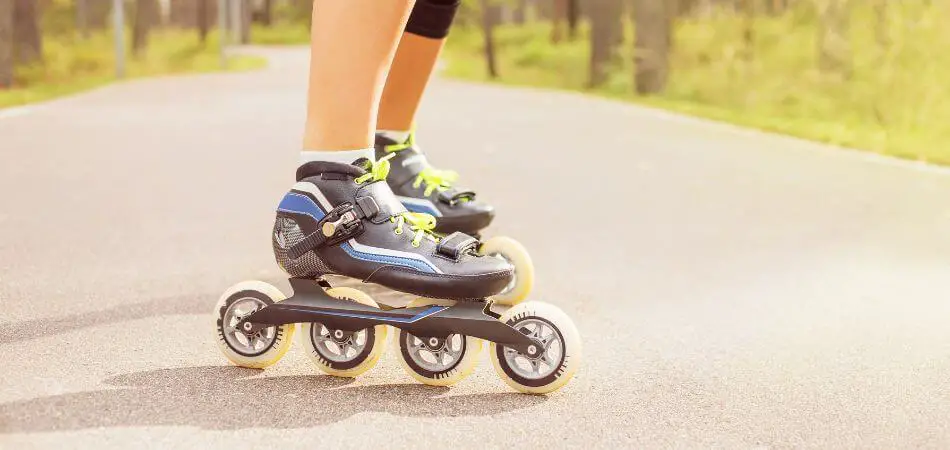
Equipment, Cost, and Maintenance
When considering roller skates vs. ice skates, it’s important to look at the equipment and costs involved.
Roller Skates
- Initial Costs: Roller skates can range from $50 to $300, depending on the quality and style. Budget options are widely available, making roller skating accessible.
- Maintenance: Regular upkeep includes checking and replacing wheels, as well as maintaining bearings. Safety gear like helmets and knee pads is also recommended.
Ice Skates
- Initial Costs: Ice skates typically range from $100 to $500, depending on the type (recreational vs. professional) and brand. Additionally, costs for sharpening blades and renting rink space can add up.
- Maintenance Needs: Ice skates require regular blade sharpening and inspections for wear, while protective gear is essential for safety.
Safety and Risk of Injury
Both sports come with their own risks of injury, but understanding these can help skaters stay safe.
Roller Skating Risks
- Common Injuries: Wrist and elbow injuries are common in roller skating due to falls. Wearing protective gear, such as wrist guards and knee pads, is highly recommended.
Ice Skating Risks
- Common Injuries: Falls on hard ice can lead to serious injuries, including fractures and sprains. Helmets and padded gear are advisable, especially for beginners.
Environmental and Seasonal Considerations
The environment plays a significant role in the feasibility of roller skating and ice skating.
Roller Skates
- Ideal Conditions: Roller skates are perfect for warm weather and can be enjoyed in various outdoor settings. The ability to skate on multiple surfaces adds versatility.
Ice Skates
- Seasonal Limitations: Ice skates are often limited to cold-weather months unless indoor rinks are available. This can impact accessibility depending on the region.
Choosing Based on Lifestyle and Personality
Ultimately, your choice between roller skates and ice skates should align with your lifestyle and personal preferences.
- Outdoor vs. Indoor: If you prefer outdoor activities, roller skating may be the better fit. If you enjoy winter sports or the elegance of figure skating, ice skates may be your choice.
- Social Settings: Both sports offer social opportunities, but roller skating may provide a more casual atmosphere at rinks and parks, while ice skating often involves structured activities and competitions.
Conclusion: Embrace Your Skating Journey
Choosing between roller skates and ice skates can be a fun and exciting decision, one that opens the door to a world of movement, creativity, and connection. Whether you glide along a smooth roller rink or dance on the ice, both experiences offer tremendous joy and health benefits.
So, consider your preferences, try out both styles, and embrace the thrill of skating in whichever form speaks to you!
FAQ’s for Roller Skates vs Ice Skates
Is ice skating harder than roller skating?
Ice skating is often considered harder than roller skating due to the need for greater balance and control on a slippery surface. Ice skates have a single blade, making it essential to master edge control, while roller skates have multiple wheels that provide more stability.
What is the difference between ice skates and roller skates?
The key difference between ice skates and roller skates lies in their design: ice skates use blades for ice surfaces, while roller skates use wheels for hard, flat surfaces, affecting the techniques and skills required for each sport
Can roller skates be used on ice?
Roller skates are not designed for use on ice due to their wheels, which cannot glide smoothly on frozen surfaces. Ice skating requires specialized skates with blades that provide the necessary grip and glide on ice, making roller skates unsuitable for this environment.
How is roller skating different from ice skating in terms of friction type?
Roller skating involves rubber or urethane wheels that create rolling friction on hard surfaces, allowing for greater grip and control. In contrast, ice skating relies on low-friction ice and metal blades, which slide over the surface, reducing resistance but requiring more balance and precision.

